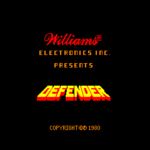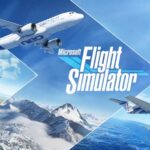Microsoft Flight Simulator (often abbreviated as MSFS, MFS or FS) is a series of amateur flight simulator programs for Microsoft Windows operating systems, and earlier for MS-DOS and Classic Mac OS. It is one of the longest-running, best-known, and most comprehensive home flight simulator programs on the market. It was an early product in the Microsoft application portfolio and differed significantly from Microsoft’s other software, which was largely business-oriented. At 39 years old, it is the longest-running software product line for Microsoft, predating Windows by three years. Microsoft Flight Simulator is one of the longest-running PC video game series of all time. (Source from Wikipedia)

Bruce Artwick began the development of Flight Simulator in 1977. His company, Sublogic, initially distributed it for various personal computers. In 1981, Artwick was approached by Microsoft’s Alan M. Boyd who was interested in creating a “definitive game” that would graphically demonstrate the difference between older 8-bit computers, such as the Apple II, and the new 16-bit computers, such as the IBM PC, still in development. In 1982, Artwick’s company licensed a version of Flight Simulator for the IBM PC to Microsoft, which marketed it as Microsoft Flight Simulator 1.00.

flight simulator 1.0 (1982)

Microsoft Flight Simulator, commonly known as Microsoft Flight Simulator 1.0, is a flight simulator video game, released in November 1982 for the IBM PC.[1] It is the first release in the Microsoft Flight Simulator series. In Microsoft Flight Simulator (1.0), the player flies a Cessna 182 in one of four US regions: Chicago, Los Angeles, New York City, or Seattle. The starting airport was Meigs Field in Chicago, with a view of the city skyline to the left and Lake Michigan to the right. It would remain the default airport in future versions of Microsoft Flight Simulator, until the real airport was closed.


flight simulator 2.0 (1984)
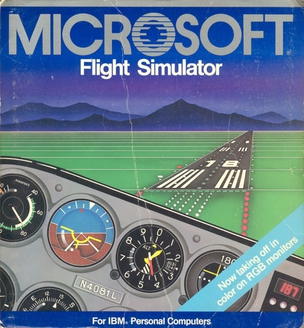
Microsoft Flight Simulator, commonly known as Microsoft Flight Simulator 2.0 or FS2, is a flight simulator video game. It was released in 1984 for the IBM PC as a self-booting disk.
This version made small improvements to the original version, including the graphics and a more precise simulation in general. It added joystick and mouse input, as well as support for RGB (4-color CGA graphics) and composite monitors and IBM PCjr.
The new simulator expanded the scenery coverage to include a model of the entire United States, although the airports were limited to the same areas as in Microsoft Flight Simulator 1.0.
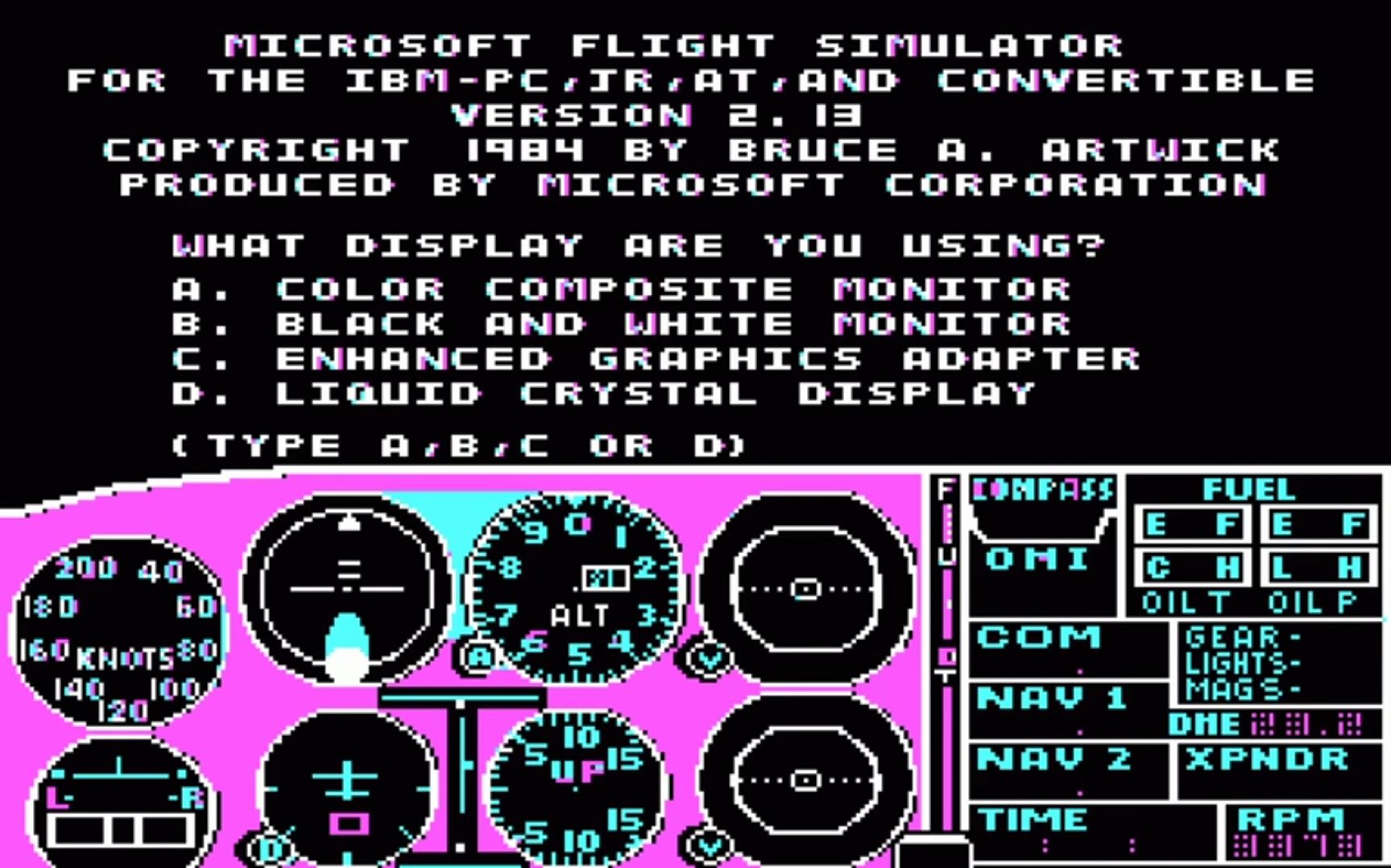

flight simulator 3.0 (1988)

Microsoft Flight Simulator, commonly known as Microsoft Flight Simulator 3.0 or FS3, is a flight simulator video game. It was released in mid-1988 for the MS-DOS.
Microsoft Flight Simulator 3 improved the flight experience by adding additional aircraft and airports to the simulated area found in Microsoft Flight Simulator 2.0, as well as improved high-res (EGA) graphics, and other features lifted from the Amiga/ST versions.
The three simulated aircraft were the Gates Learjet 25, Cessna Skylane, and Sopwith Camel. Flight Simulator 3 also allowed the user to customize the display; multiple windows, each displaying one of several views, could be positioned and sized on the screen. The supported views included the instrument and control panel, a map view, and various external camera angles.

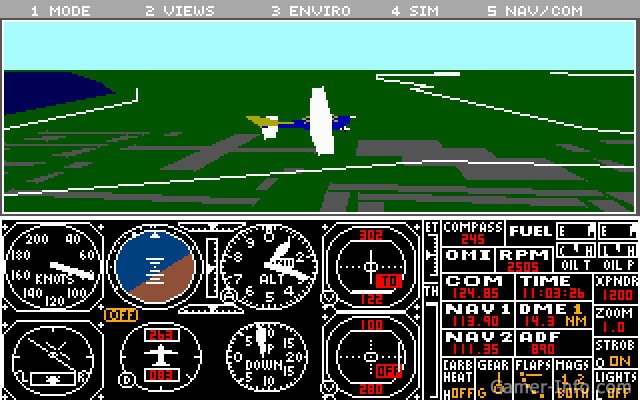
flight simulator 4.0 (1989)

Microsoft Flight Simulator, commonly known as Microsoft Flight Simulator 4.0 or FS4, is a 1989 video game developed by Bruce Artwick Organization and published by Microsoft. Microsoft Flight Simulator 4.0 is a game in which the ability to adjust flight characteristics and create experimental aircraft are among the new features added. It also included improved aircraft models, random weather patterns, a new sailplane, and dynamic scenery (non-interactive air and ground traffic on and near airports moving along static prerecorded paths). The basic version of FS4 was available for Macintosh computers in 1991. Like FS3, this version included an upgraded converter for the old Sublogic Scenery Disks into SCN files.


flight simulator 5.0 (1995)
Flight Simulator 5.0 is the first version of the series to use textures. This allowed FS5 to achieve a much higher degree of realism than the previous flat-shaded simulators. This also made all add-on scenery and aircraft for the previous versions obsolete, as they would look out of place.
The bundled scenery was expanded (now including parts of Europe). Improvements were made to the included aircraft models, the weather system’s realism, and artificial intelligence. The coordinate system introduced in Flight Simulator 1 was revamped, and the scenery format was migrated from the old SCN/SC1 to the new and more complex BGL format.
More noticeable improvements included the use of digital audio for sound effects, custom cockpits for each aircraft (previous versions had one cockpit that was slightly modified to fit various aircraft), and better graphics.
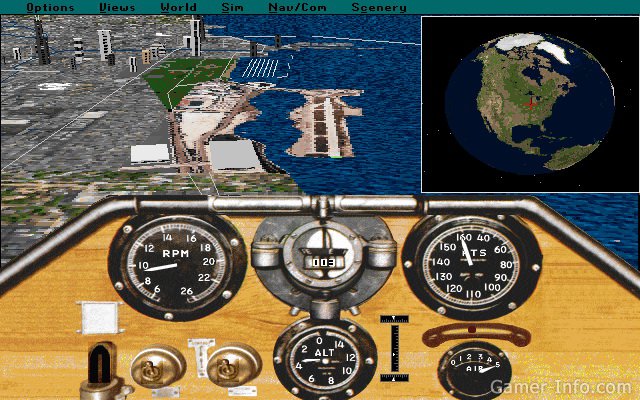
flight simulator 2000 (1999)

Flight Simulator 2000 (version 7.0), abbreviated as FS2000, was released as a major improvement over the previous versions, and was also offered in two versions: One version for “normal” users, and one “pro” version with additional aircraft.
This version also introduced 3D elevation, making it possible to adjust the elevation for the scenery grids, thus making most of the previous scenery obsolete (as it didn’t support this feature). A GPS was also added, enabling an even more realistic operation of the simulator. FS2000 also upgraded its dynamic scenery, with more detailed models and AI that allowed aircraft to yield to other aircraft to avoid incursions while taxiing.
FS2000 included an improved weather system, which featured precipitation for the first time in the form of either snow or rain, as well as other new features such as the ability to download real-world weather.
New aircraft in FS2000 included the supersonic Aerospatiale-BAC Concorde (prominently featured on both editions’ box covers) and the Boeing 777 which had recently entered service at the time.
flight simulator 2002 (2001)
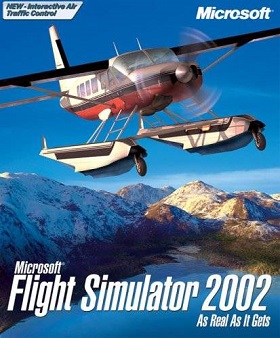
Microsoft Flight Simulator 2002 also known as FS2002, is a video game released in October 2001, and is the 8th installment of the Microsoft Flight Simulator video game series. A version called Professional Edition was released at the same time as standard edition that added two aircraft, a flight instructor feature, and an editor to create buildings and aircraft. FS2002 (8.0) improved vastly over previous versions. In addition to improved graphics, FS2002 introduced air traffic control (ATC) and artificial intelligence (AI) aircraft enabling users to fly alongside computer controlled aircraft and communicate with airports. An option for a target framerate was added, enabling a cap on the framerate to reduce stutter while performing texture loading and other maintenance tasks. In addition, aircraft feature a 3D virtual cockpit, creating in effect a view of the cockpit from the viewpoint of a real pilot. The external view also featured an inertia effect, inducing an illusion of movement in a realistic physical environment.
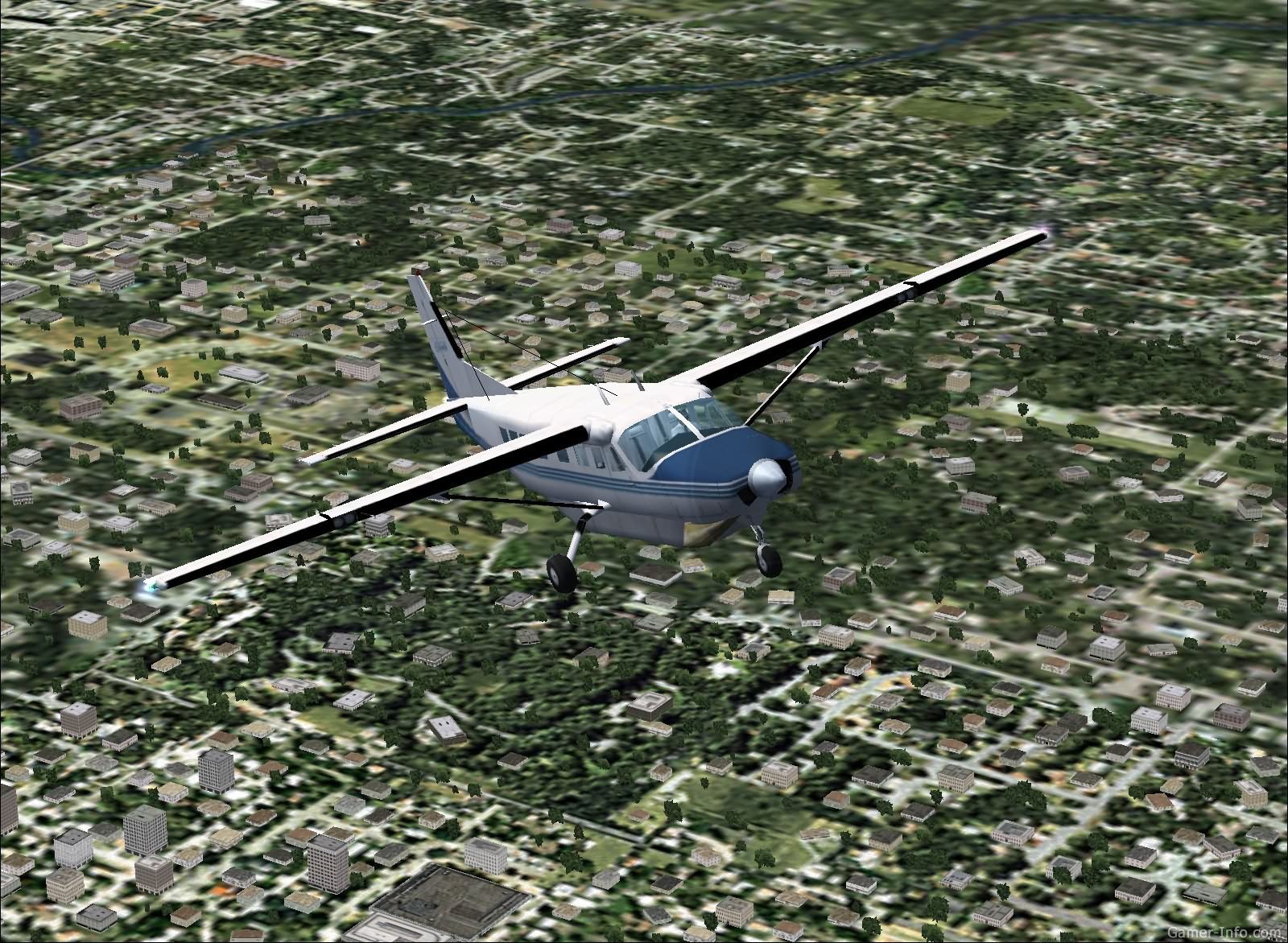
flight simulator 2004 (2003)

Microsoft Flight Simulator 2004: A Century of Flight is a flight simulation video game released in 2003, and is part of the Microsoft Flight Simulator video game series. It is the last version to support Windows 98/9x series of operating systems. Flight Simulator 2004 (9.0): A Century of Flight, also known as FS9 or FS2004, was shipped with several historical aircraft such as the Wright Flyer, Ford Tri-Motor, and the Douglas DC-3 to commemorate the 100th anniversary of the Wright Brothers’ first flight. The program included an improved weather engine, that provided true three-dimensional clouds and true localized weather conditions for the first time. The engine also allowed users to download weather information from actual weather stations, allowing the simulator to synchronize the weather with the real world. Other enhancements from the previous version included better ATC communications, GPS equipment, interactive virtual cockpits, and more variety in autogen such as barns, street lights, silos, etc.
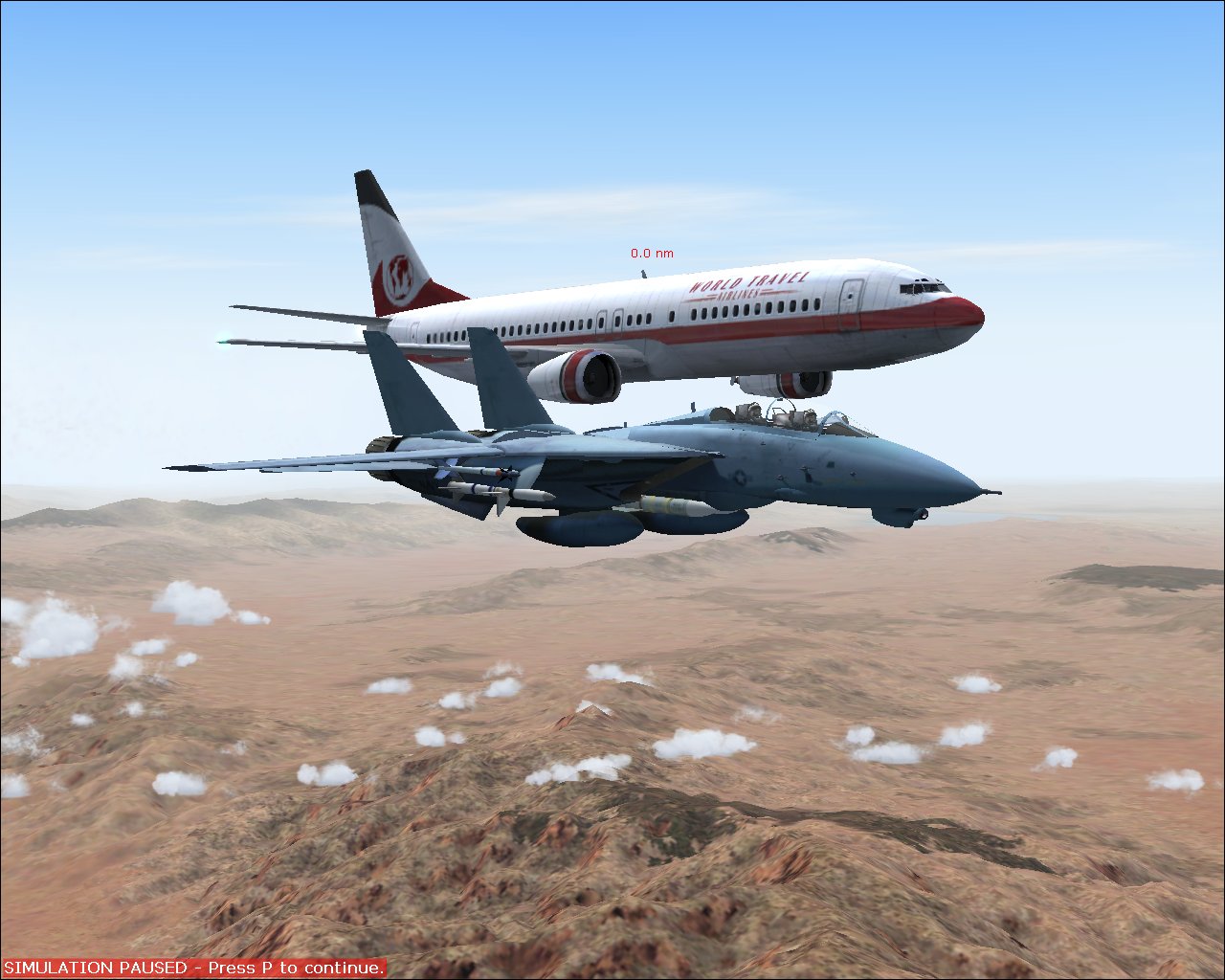

flight simulator x (2006)

Microsoft Flight Simulator X (abbreviated as FSX) is a 2006 flight simulation video game originally developed by Aces Game Studio and published by Microsoft Game Studios for Microsoft Windows. It is the sequel to Microsoft Flight Simulator 2004 and the tenth installment of the Microsoft Flight Simulator series, which was first released in 1982. It is built on an upgraded graphics rendering engine, showcasing DirectX 10 features in Windows Vista and was marketed by Microsoft as the most important technological milestone in the series at the time. FSX is the first version in the series to be released on DVD media.
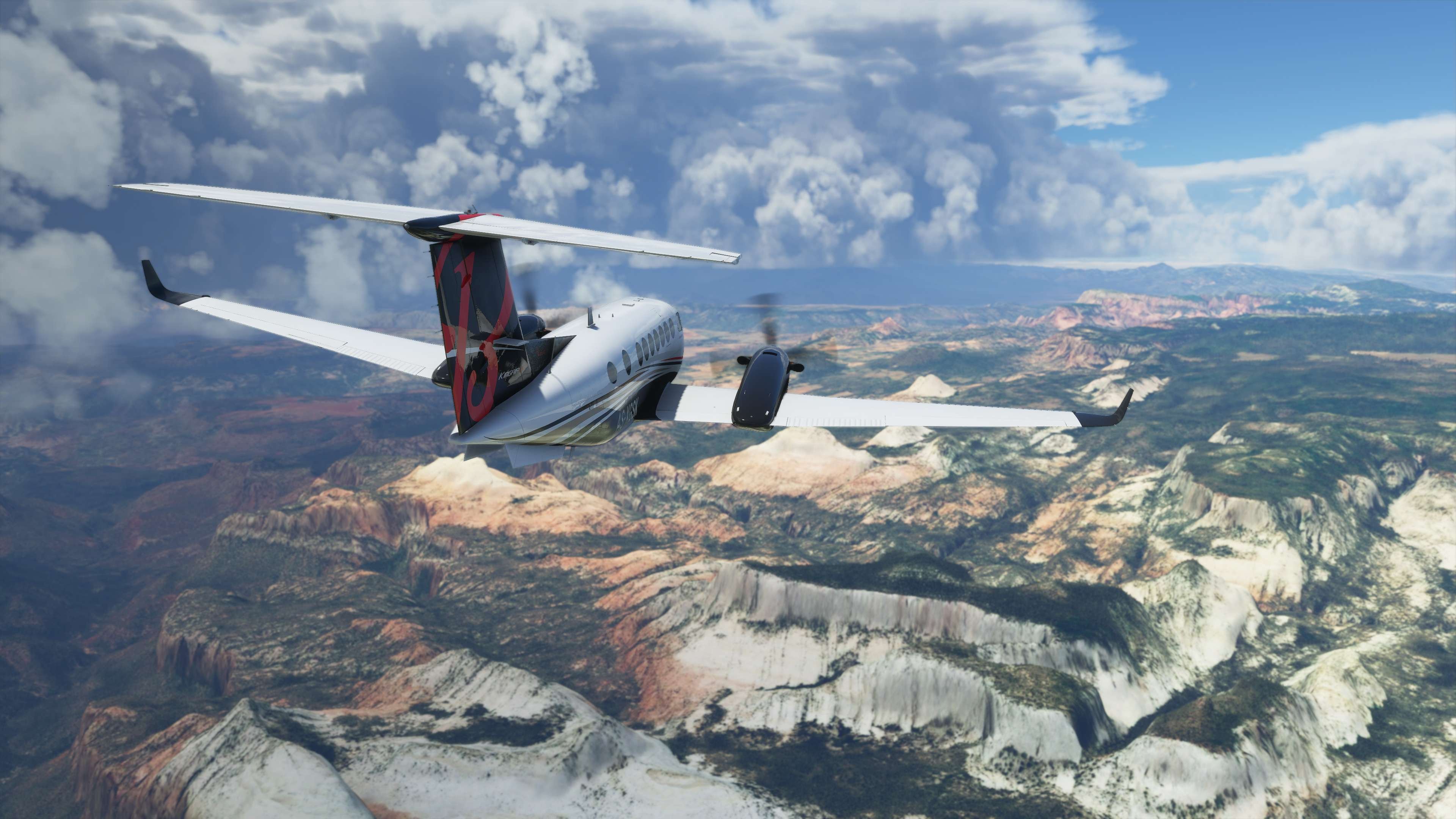
flight simulator 2020

Microsoft Flight Simulator (colloquially known as Microsoft Flight Simulator 2020) is an amateur flight simulator developed by Asobo Studio and published by Xbox Game Studios. It is an entry in the Microsoft Flight Simulator series which began in 1982, and was preceded by Microsoft Flight Simulator X in 2006. The game is a return of the series after a 14-year absence, with development beginning six years prior to its release. Flight Simulator simulates the topography of the entire Earth using data from Bing Maps. Microsoft Azure’s artificial intelligence (AI) generates the three-dimensional representations of Earth’s features, using its cloud computing to render and enhance visuals, and real-world data to generate real-time weather and effects. Flight Simulator has a physics engine to provide realistic flight control surfaces, with over 1,000 simulated surfaces, as well as realistic wind modelled over hills and mountains. Some places are handcrafted, introduced in region-specific updates. To augment its realism, the Azure AI also incorporates real-time elements like natural weather and real-world air traffic. The gameplay includes new features like landing challenges and helpers, as well as safaris where pilots can photograph animals from the air. A distinct difference from the other entries is the game does not display any scenes of destruction.






